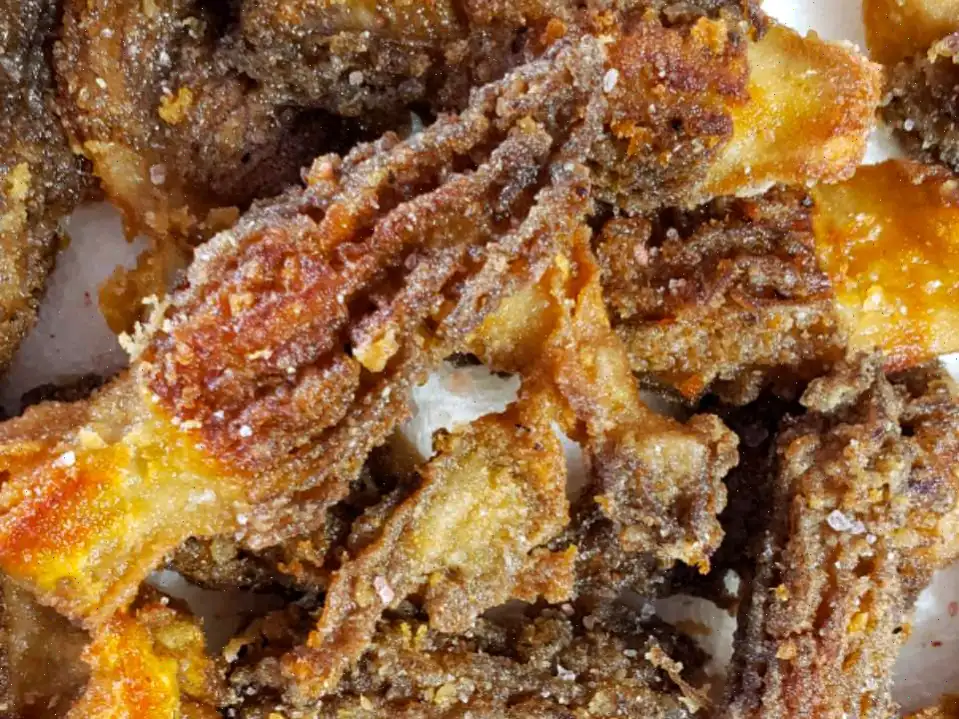
Olive Boursin Spread Recipe
Ingredients
- 2 tablespoons pitted Kalamata olives, drained and roughly chopped
- 2 tablespoons pimento-stuffed green olives, drained and roughly chopped
- 2 tablespoons oil-packed sun-dried tomatoes, drained and roughly chopped
- 1 (5.2 ounce) package garlic & fine herbs Gournay cheese (such as Boursin), softened
- 1/2 fresh lemon, zested and juiced
- 1 1/2 teaspoons olive oil
- 1/4 teaspoon dried oregano
- Freshly ground black pepper to taste
- 1/2 cucumber, sliced 1/4-inch thick
- Crackers, any kind
- Fresh oregano leaves (optional)
Directions
- Combine Kalamata olives, green olives, and sun-dried tomatoes in a small bowl.
- In another bowl, add the softened Gournay cheese, lemon zest, lemon juice, olive oil, dried oregano, and freshly ground black pepper. Stir everything together until well combined.
- Gently fold in the olive and sun-dried tomato mixture to the cheese blend. Mix until incorporated.
- To serve, place a cucumber slice on a cracker, top with a generous dollop of the spread, and garnish with a fresh oregano leaf, if desired.
- Leftover spread can be stored in an airtight in the refrigerator for later use.
Nutrition Facts (per serving)
| Nutrition Information | Per Serving |
|---|---|
| Calories | 185 |
| Total Fat | 8g |
| Saturated Fat | 2g |
| Cholesterol | 5mg |
| Sodium | 271mg |
| Total Carbohydrate | 30g |
| Dietary Fiber | 5g |
| Total Sugars | 7g |
| Protein | 5g |
| Vitamin C | 82mg |
| Calcium | 136mg |
| Iron | 2mg |
| Potassium | 397mg |
History and Origins of Olive Boursin Spread
The Olive Boursin Spread combines the rich tradition of French soft cheese with Mediterranean flavors. Boursin cheese itself was created in Normandy, France in 1957 by Franois Boursin, who wanted to produce a creamy, flavorful cheese that could be enjoyed as a spread. The addition of olives and sun-dried tomatoes introduces a Mediterranean twist, blending French cheesemaking finesse with the bold, savory tastes of Southern Europe. Over time, this fusion has evolved into a popular appetizer in American and European cuisine, celebrated for its simplicity and elegance.
Regional Variations and Characteristics
While the original Boursin spread is French, regional variations have emerged around the world. In the Mediterranean, versions often include local olives such as Kalamata or Castelvetrano, and sometimes capers or roasted red peppers. In the United States, the spread is frequently served on crackers or toasted baguette slices and may incorporate lemon zest and fresh herbs like oregano or chives. Each region adapts the spread to local tastes, but the essential characteristic remains a creamy, herb-infused cheese combined with a flavorful mix of chopped olives and sun-dried tomatoes.
Distinctions from Similar Dishes
Olive Boursin Spread differs from other cheese spreads in both texture and flavor profile. Unlike cream cheese spreads, it is lighter and silkier, melting smoothly on the tongue. Compared to tapenade, which is primarily a finely chopped olive paste, this spread balances the saltiness of olives with the creaminess of Boursin cheese. The combination of lemon zest and fine herbs adds a delicate freshness, making it more nuanced than standard olive-based dips or spreads.
Typical Serving Occasions
This gourmet spread is versatile and often found at casual gatherings as well as formal parties. It is commonly served on crackers, toasted baguette slices, or cucumber rounds as an appetizer. It also works beautifully as a filling for sandwiches or wraps, or as a component of a cheese platter alongside cured meats, fruits, and nuts. Its visual appeal and complex flavor make it an excellent choice for holiday parties, wine tastings, and cocktail receptions.
Interesting Facts
- Boursin cheese is traditionally flavored with garlic and herbs, a combination inspired by Normandys love of aromatic seasonings.
- The pairing of olives and sun-dried tomatoes highlights the Mediterranean influence, reflecting a culinary cross-cultural exchange.
- Olive Boursin Spread can be easily customizedadding roasted red peppers, fresh basil, or even a touch of chili can create unique flavor variations.
- This spread keeps well in the refrigerator for several days, making it a convenient option for entertaining or meal prep.
- While Boursin is a soft cheese, it is rich in protein and calcium, offering a small nutritional benefit alongside its indulgent taste.








